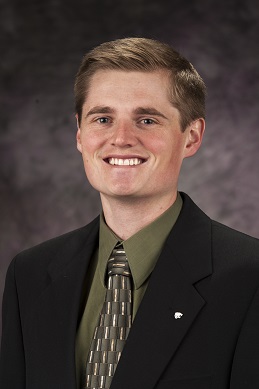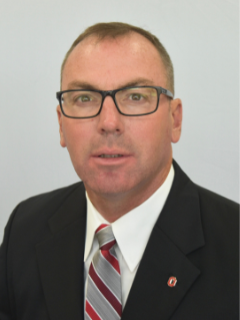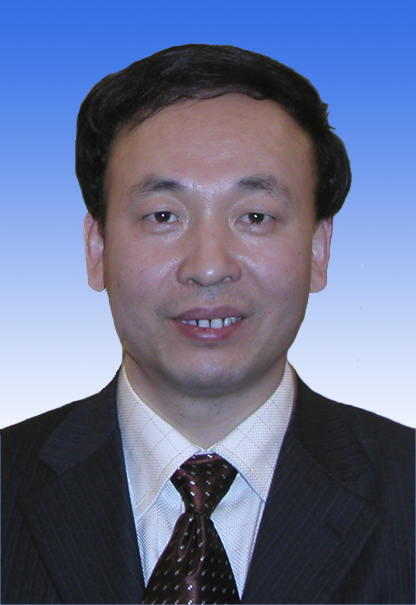
Date: Mon Aug 1, 2016
Time: 10:20 AM - 12:00 PM
Moderator: Nicolas Tremblay
The ability to collect soil, topography, and productivity information at spatial scales has become more feasible and more reliable with many advancement in precision technologies. This ability, combined with precision services and the accessibility farmers have to equipment capable implementing precision practices, has led to continued interest in making site-specific crop management decisions. The objective of this research was to utilize soil and topographic parameters to optimize seeding rates to maximize grain yield. Five maize seeding rates (61,750; 74,100; 86,450; 98,800; and 111,150 seeds ha-1) were used in a randomized complete block design with four or five replications in three central Iowa fields from 2012 to 2014. Soil samples were analyzed for P, K, pH, SOM, CEC, and texture. Topographic characteristics (elevation, slope, aspect, and curvature) were determined from publically available Light Detection and Ranging (LIDAR) data. There were no interactions between seeding rate and soil and topographic variables in four site-years. There was a seeding rate interaction with a single variable (pH, elevation, curvature) in three site-years and one site-year having an interaction with three variables (pH, CEC, SOM). A fifth site-year resulted multiple seeding rate interaction, however, optimized seeding rates were not meaningful because they were extrapolated below the lowest seeding rate. The mean optimized seeding rate at Ames in 2012 was 94,256 seeds ha-1 with a range of 2,471 seeds. At Ogden in 2012, 2013, and 2014 the mean optimized seeding rates were 83,270; 90,383; and 81,027 seeds ha-1 with a range of 22,408; 23,723; and 13,495 seeds respectively. Overall, no single soil parameter or topographic characteristic was consistently identified for maize seeding rate optimization.
Choice of hybrid and accurate amount of plants per area determines grain yield and consequently net incomes. Local field adjustment in plant population is a strategy to manage spatial variability and optimize environmental resources that are not under farmer control (like soil type and water availability). This study aims to evaluate the response of hybrids by levels of plant population across management zones (MZ). Six different hybrids and five rates of plant populations were analyzed starting with a local recommended seeding rate (55000 pl ha-1) and offsetting it in 40% and 20% below and above this reference. Three field experiments were conducted in commercial fields from 2012 to 2015 in Brazil tropical region (Maracaju – MS) where corn is grown as a secondary crop following soybean. MZ were establish by cluster analysis of soil electrical conductivity (ECa), yield maps (YM) and elevation. Long strip tests with fix rate of plants were carry out crossing different zones. High yielding MZ reached higher average yield compared to the low yielding MZ. The optimal plant population can vary by up to 5743 pl ha-1 across MZ within the same field, depending on hybrid. Responsive hybrids to plant population are key to achieving positive results using variable rate seeding (VRS). Grain yield achieved by farmers in the second crop is limited by use of low plant population density, about 25% away from the optimal plant density. Years with lower yield averages have a narrow optimal plant population interval. Although, further studies are required to understand the potential of VRS within fields also considering levels of fertilization and different planting dates. However, to increase the adoption of VRS it is necessary to facilitate the process of MZ setting and optimal plant population choice.

.png)
Downforce control allows planters to maintain gauge wheel load across a range of soil resistance within a field. Downforce control is typically set for a target seed depth and either set to manually or automatically control the gauge wheel load. This technology uses load cells to actively regulate downforce on individual row units by monitoring target load on the gauge wheels. However, no studies have been conducted to evaluate the variability in gauge wheel load observed during planter operation under real-world field conditions. Therefore, the objective of this study was to 1) evaluate real-time gauge wheel load variability across planter rows given a target gauge wheel load for a planter equipped with downforce control and 2) compare and contrast gauge wheel load measurements across differing rows to intercept downforce control diagnostics. A 12-row planter equipped with hydraulic downforce control was utilized for planting three fields. The planter was segregated into four sections, each with independent downforce control via two bending beam load cells to record gauge wheel load. Control-section 1 and 3 comprised 3 rows units each on the left and right side of the planter bar. Control section 2 involved 4 row units following the tire tracks and section 4 was two rows in the middle. The downforce system utilized four hydraulic blocks each controlling downforce to maintain target gauge wheel load for the respective row units. The planter was set to plant at 5.2 cm depth and the target gauge wheel load was set at 91 kgf. A data acquisition system recorded real-time GPS, planting speed, load cells output, and planting status at 10 Hz. Data was analyzed to compute average gauge wheel load across each of the 8-row units with load cells, and average gauge wheel pressure for each of four sections. Average required downforce variability across control sections and percent area planted with beyond ± 20% of target gauge wheel load were computed. Results suggested that more than 50% of the field was planted with gauge wheel load beyond ± 20% of target. There was also significant difference in actual gauge wheel load across the four control sections. Future studies will be designed to understand conditions impacting variability in gauge wheel load and ability of the modern downforce system to seeding depth under real-world conditions.


Proper seeding depth control is essential to optimize row-crop planter performance, and adjustment of planter settings to within field spatial variability is required to maximize crop yield potential. The objectives of this study were to characterize planting depth response to varying soil conditions within fields, and to discuss implementation of active seeding depth technologies in Southeastern US. This study was conducted in 2014 and 2015 in central Alabama for non-irrigated maize (Zea mays L) and cotton (Gossypium hirsutum L). Planting was performed using a 6-row John Deere Max Emerge Plus planter equipped with heavy duty downforce springs. Three seeding depths and three downforce settings were selected for both crops, and the experiment was conducted in two fields exhibiting typical Coastal Plain features but characterized by different soil properties and terrain attributes. Soil electrical-conductivity and soil water content were used to measure within field spatial variability, and actual planting depth was characterized after emergence. Results demonstrated that actual planting depth was significantly affected by within field spatial variability, and actual planting depth response to field spatial variability was more accentuated during corn versus cotton planting. Soil electrical conductivity provided sufficient description of in-field variability to explain site-specific planting depth response in 4 out of 5 field trials. Soil water content was not a significant predictor of planting depth response to in-field spatial variability.

Rapid socio-economic changes in China, such as land conversion and urbanization etc., are creating new scopes for application of precision agriculture (PA). It remains unclear the application effective and economic benefits of precision agriculture technologies in China. In this study, our specific goal was to analyze the impact of precision seeding and laser land leveling on winter wheat yield, grain quality, residual soil nitrogen, benefit/cost ratio and net return. Three treatments was carried out in a winter wheat of the central plains of China, namely, precision seeding, integration of precision seeding and laser land leveling, and local large-scale conventional farming, respectively. Our results showed that: (1) winter wheat yield was increased by 7.8 % in the single precision seeding treatment while significantly increased by 23.2 % through the integration of precision seeding and laser leveling technologies. There was no significant difference of the winter wheat protein content among the three treatments. (2) Both the single technology and the integrated technologies reduced the concentration of soil nitrate nitrogen and ammonium nitrogen at the depths of 60 cm, but, the significantly reduction was only found in soil ammonium nitrogen. (3) Compared with conventional farming, applying precision seeding improved the benefit/cost ratio by 5.9 %, and the integrated technologies improved by 16.6 % and 7.9 % under the two scenarios of "having" and "not having" laser leveling subsidies. These results clearly indicated that the application of precision agriculture technologies can significantly enhance the yield, reduce the residual soil nitrogen and improve the economic benefits, without affecting the winter wheat quality. Supporting policies can significantly promote the popularization and application of precision agriculture technologies in China.

